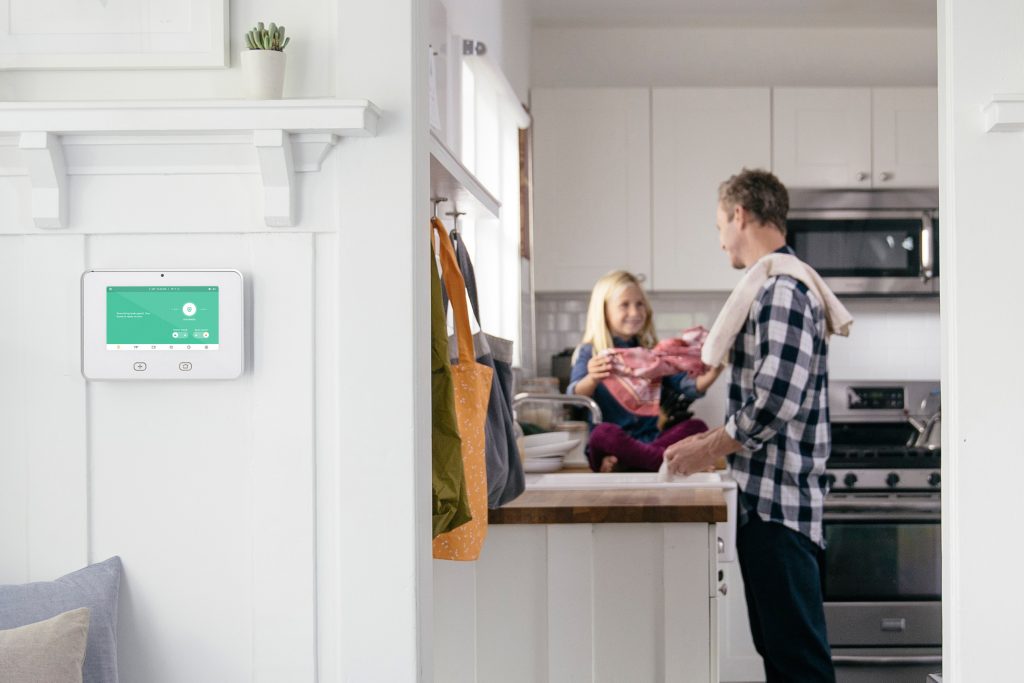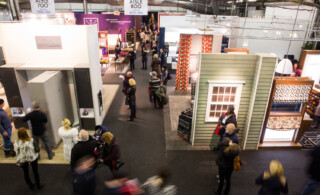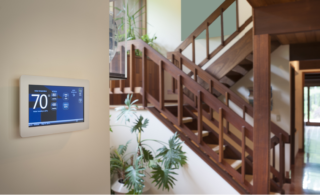If you want to know the future of the smart home, a nondescript hotel on a lonely stretch of highway near San Francisco International Airport might not be the first place you’d look. Unless, that is, said hotel was the scene of CONNECTIONS, an annual gathering of industry’s insiders and influencers that’s billed, rightly so, as the premiere connected home conference.
The 2017 installment of CONNECTIONS took place from May 23-25 and brought together some 650 attendees from the likes of Amazon, Google, Honeywell, Nest, and Vivint. There were also plenty of minnows among the big fish, including startups whose big idea might just be the thing to propel the smart home from the early adopter phase into mass-market adoption.
HomeAdvisor was on hand, sharing insights and offerings into the smart home space, including the rollout of new partnerships with Honeywell and Overstock.com, which help consumers connect directly with service professionals for a range of tasks, from furnace repairs to ceiling fan installations.
Here are the top 5 trends that came out of the firehose of content that is CONNECTIONS
1. Voice control is here to stay.
As ubiquitous as Amazon Alexa and Google Home are today, it’s easy to forget that voice-based digital assistants have only been around for a couple years. The innovation has already done more than any other to advance the concept of connected products in the minds of U.S. consumers. And it’s just getting started. As Matt Eyring, chief strategy and innovation officer at Vivint Smart Home, put it, “voice control is not the end, it’s just the beginning.”
We’re now seeing the emergence of whole-house systems that use hands-free automation to create a seamless, intuitive connected-home experience. One I really like is Josh.ai, a premium product aimed at homes in the 10,000-square-feet and up range. Think of it like a whole-house solution that controls every connected device, but instead of opening up a bunch of apps, you simply tell Josh what to do through your smart phone or other WiFi-ready microphone. It’s a smart option for people who don’t like the idea of an always-listening wireless speaker.
2. WiFi overload is a growing concern.
The average household has ten connected devices, going to fifty by the year 2020. That’s making reliable and robust high-speed internet more vital than ever. “WiFi has become the 4th utility in the home and consumers don’t want to compromise,” said Rahul Patel, Senior Vice President and General Manager of Connectivity Business Unit at Qualcomm, a wireless telecommunications company.
Mesh networking, which uses interconnected routers to beef up coverage and eliminate dead zones throughout the home, has been available to consumers for a couple years now. The next phase in the evolution is self-organizing networks (SON). These whole-house systems consist of multiple nodes that smart devices connect to automatically. The systems can also detect usage spikes and balance traffic between bands, eliminating slow downloads and other connectivity headaches; identify untrusted sources, adding a much-coveted security layer; and deploy self-diagnostics to fix internet faults before they occur.
3. Service demands are growing.
You often hear the smart home marketed as a DIY solution. Sure, there are homeowners out there with the time and know-how to design and install their own systems. But the Do-It-For-Me camp is significant. In a recent survey conducted by HomeAdvisor, less than half of the respondents who purchased connected products told us they handle the installation themselves. The survey also revealed that there’s no immediate go-to for homeowners in need of smart home support: roughly half of respondents turn to security companies and electricians, while a quarter call on a handyman or HVAC contractor.
That’s creating a market for companies offering specialized smart home support. HelloTech, for one, has 7,000 pros nationwide who handle everything from thermostat installations to network connectivity support. Another is PlumChoice, a white-label technical services for cloud and Internet of Things companies whose specialists provide over-the-phone support to consumers.
4. Retail is finally smartening up.
The industry buzzword is “consultative retail.” It basically means giving customers a personalized, well-informed shopping experience. If you’ve ever asked for help choosing a smart home product at a big box store, you’ve probably experienced something less—maybe a blank stare as you ask for the difference between two competing smart thermostats or a shrug of the shoulder when you inquire about installation.
Manufacturers and retailers are recognizing that a better retail experience is critical to wider smart home adoption. This summer, Best Buy will roll out a partnership with Vivint; customers at 400 stores nationwide will be guided by in-store experts through the selection and purchase of smart home equipment. Amazon is already offering free in-house smart home consultations in a handful of west coast markets, including Seattle, San Francisco, and Los Angeles. Look for more retailers, both online and brick-and-mortar, to adopt consultative retail programs of their own.
5. Artificial Intelligence (AI) gets real.
Machine learning is another key to unlocking the full potential of the smart home. We’ve seen it for a few years now, for example with learning thermostats, like the Nest, which program themselves based on homeowner behaviors.
The technology is starting to scale up. “Transforming data into actionable insights represents the next major leap in creating user value,” said Sandra Maples, Director of IoT Product Management at Verisk Insurance Solutions, said in a pre-CONNECTIONS Q&A. “From a maintenance perspective, smart products hold the promise of eliminating or at least reducing the impact of perils, such as fire, theft, and non-weather water events.”
That AI application could lead to insurance relief for consumers, though the non-weather related events Maples describes account only for about 30 percent of insurance claims. So other use cases will be needed to turn AI into a true game changer.
The one I’m most excited about is a smart home assistant that blows past Alex and Siri in its ability to manage your home and life, for example using sensors and predictive analytics to alert you to a problem with your home’s central air before it conks out. Then HomeAdvisor could step in to have a contractor on the way in minutes to make the repair, before you’ve even broken a sweat.

 Empty-Nesters, Smart-Home Tech & Their Impact on Home Improvement Trends
Empty-Nesters, Smart-Home Tech & Their Impact on Home Improvement Trends  7 Smart Home Products You Have to (Not) See to Believe
7 Smart Home Products You Have to (Not) See to Believe  3 Smart Kitchen Gadgets to Take the Guesswork Out of Cooking
3 Smart Kitchen Gadgets to Take the Guesswork Out of Cooking  Why ‘Do It For Me’ is Defining the Smart Home Market
Why ‘Do It For Me’ is Defining the Smart Home Market  How to Choose the Best Smart Thermostat for Your Home
How to Choose the Best Smart Thermostat for Your Home 

Are You Familiar With This Topic? Share Your Experience.